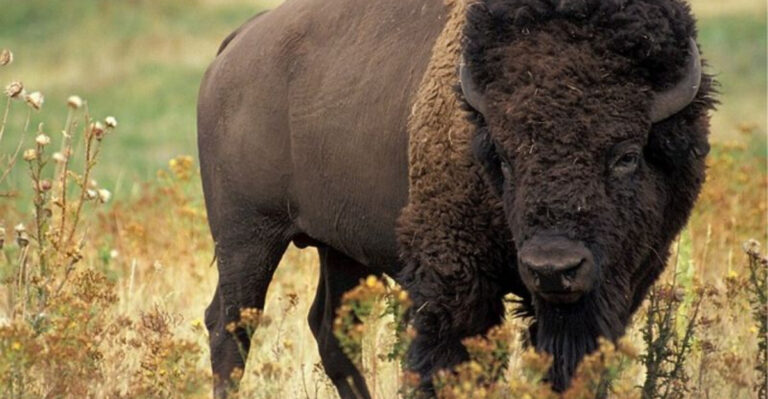15 Reasons Pythons Are Among The Most Lethal Invasive Species On The Planet
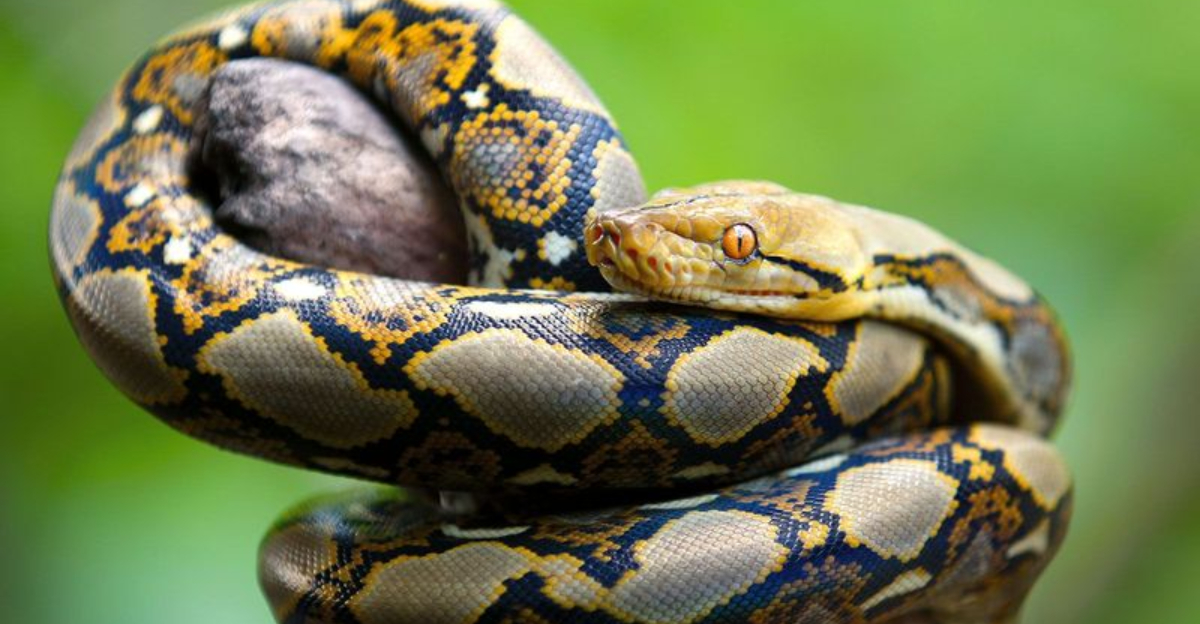
When pythons slither into ecosystems where they don’t belong, they unleash chaos that ripples through entire food webs. These massive constrictors have become nightmare neighbors in places like the Florida Everglades, where they’re devouring native wildlife at alarming rates.
Their incredible adaptability, combined with few natural predators in their new homes, has turned these snakes into one of Earth’s most devastating invasive species problems.
1. Bottomless Appetites
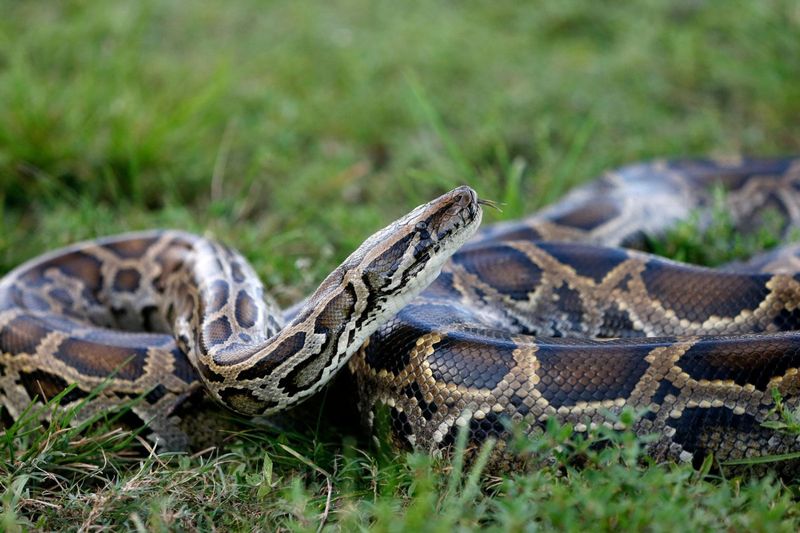
Pythons can consume prey up to five times larger than their own head size. Their jaws disconnect, allowing them to swallow animals whole – from rats to full-grown deer.
A single Burmese python can devour 165 pounds of food in a year. With thousands roaming wild in Florida alone, they’re essentially living vacuum cleaners removing native wildlife from the ecosystem.
2. Record-Breaking Reproductive Capacity
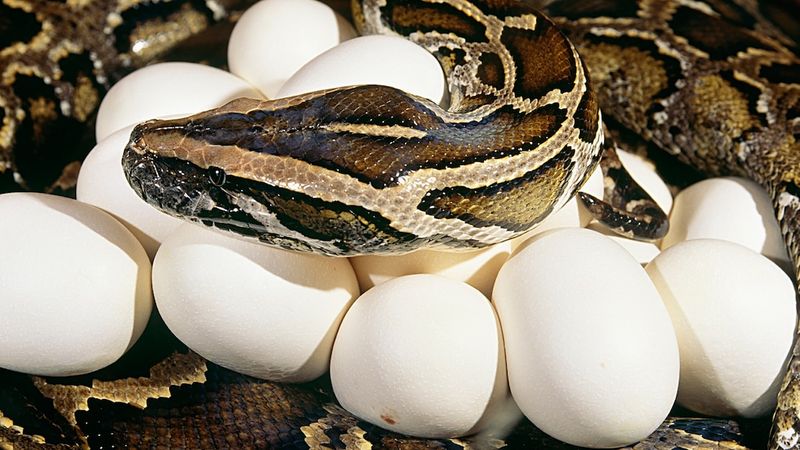
Female pythons lay between 50-100 eggs per clutch. Unlike many reptiles, mother pythons actually incubate their eggs, coiling around them and shivering to generate heat.
One captured Burmese python in Florida was found with 87 developing eggs inside her. This reproductive powerhouse means even a few escaped pets can quickly become an overwhelming invasion force.
3. Masters Of Stealth
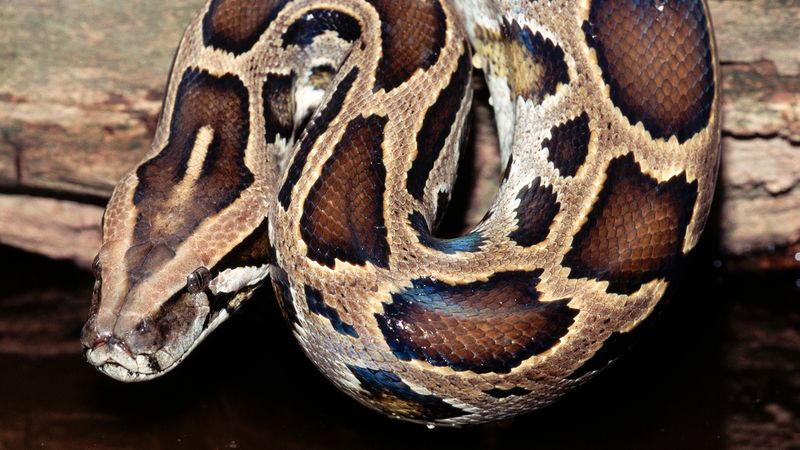
Pythons sport camouflage patterns that make them nearly invisible in underbrush. Their ambush hunting style means prey often doesn’t detect them until it’s too late.
Researchers using trained dogs to find pythons in the Everglades often walk within feet of these hidden giants without spotting them. This stealth factor makes population control through hunting extremely difficult.
4. Devastating Impact On Native Mammals
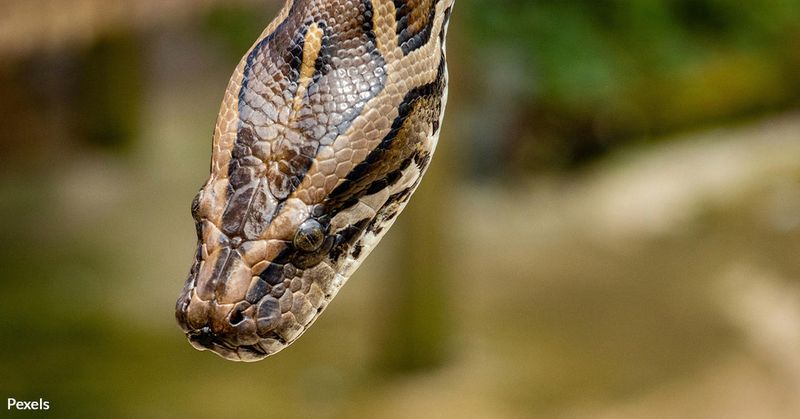
Marsh rabbits, raccoons, and opossums have disappeared from large sections of the Everglades. Studies show mammal populations have dropped by more than 90% in areas with established python populations.
Even deer and bobcats aren’t safe from these constrictors. The ecological vacuum created when these mammals vanish disrupts everything from seed dispersal to predator-prey relationships throughout the ecosystem.
5. Threatening Endangered Species
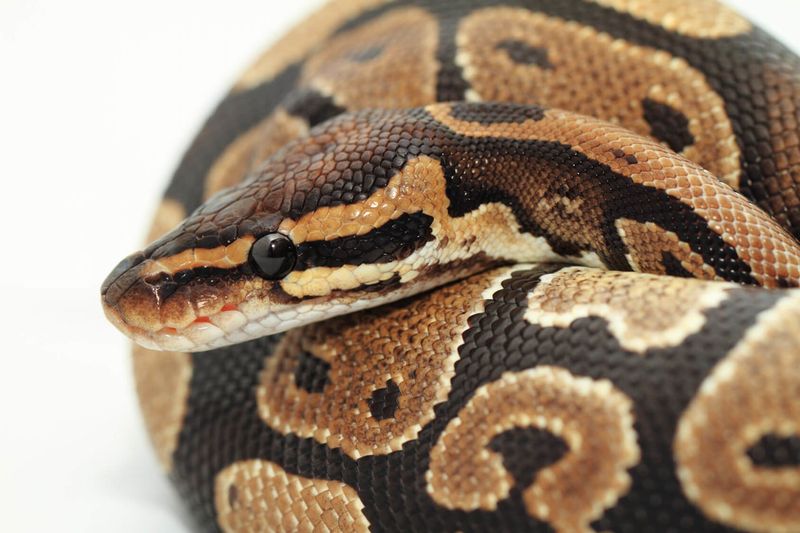
Key Largo woodrats and wood storks were already struggling before pythons arrived. Now these endangered species face an additional deadly predator further pushing them toward extinction.
Florida panthers, with fewer than 200 remaining in the wild, now compete with pythons for the same prey base. Young panthers may even become python meals, creating a double threat to this critically endangered cat.
6. Climate Adaptability
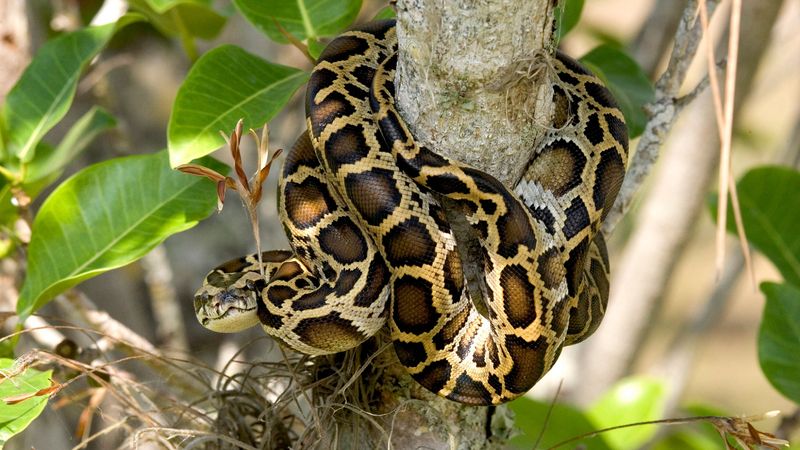
Originally from Southeast Asia, Burmese pythons have proven remarkably adaptable to new climates. Computer models originally predicted they couldn’t survive north of Florida, but wild pythons have been found surviving much colder temperatures than expected.
Some pythons have developed behaviors like basking longer in winter sun or finding warmer microhabitats. This adaptability means their potential range could extend much further north than scientists initially feared.
7. Nearly Impossible To Eradicate
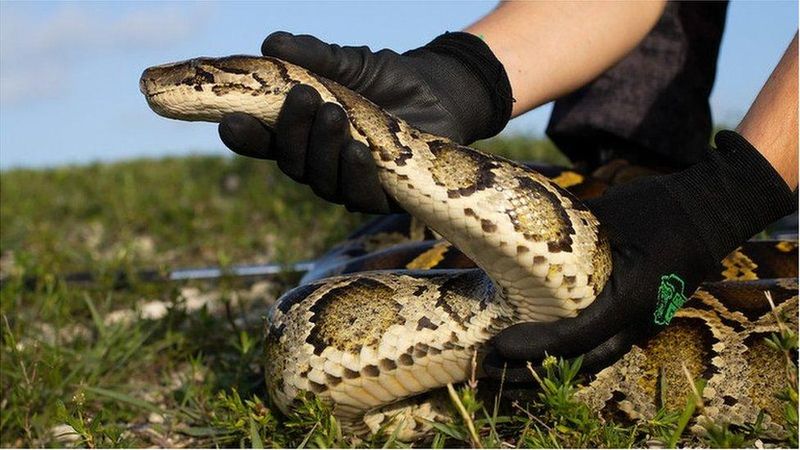
Once established, python populations become virtually impossible to eliminate. Their cryptic nature and remote habitats make detection extremely challenging even for trained professionals.
Florida has tried python-sniffing dogs, trained hunters, and even cash bounties. Yet despite removing thousands of snakes, population estimates remain in the tens of thousands. The Everglades’ vast, inaccessible wetlands provide perfect hiding spots that humans simply cannot effectively search.
8. Altering Native Predator Behavior
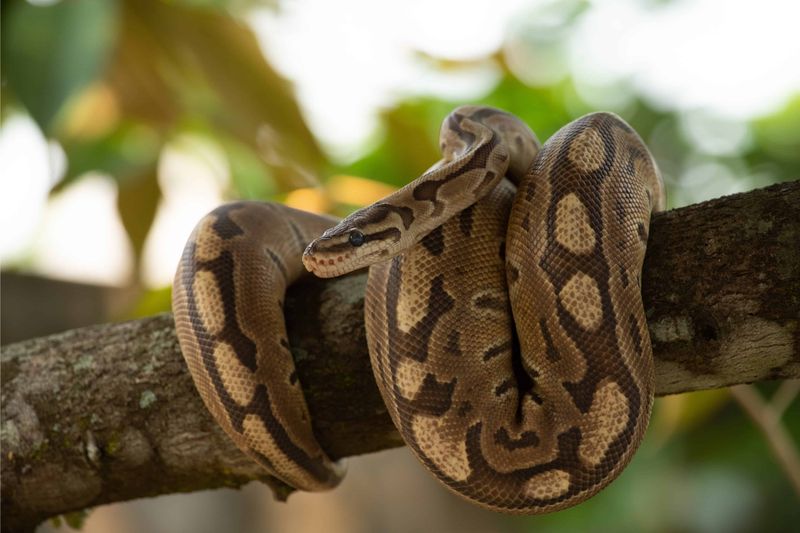
Alligators and pythons now engage in epic battles for apex predator status. Researchers have documented cases of pythons eating alligators and vice versa, creating a novel predatory dynamic never before seen in these ecosystems.
Native predators must adapt to both competing with pythons and potentially becoming their prey. This disruption ripples through the food web, forcing behavioral changes in species that evolved without snake competitors of this size.
9. Surviving Without Food For Months
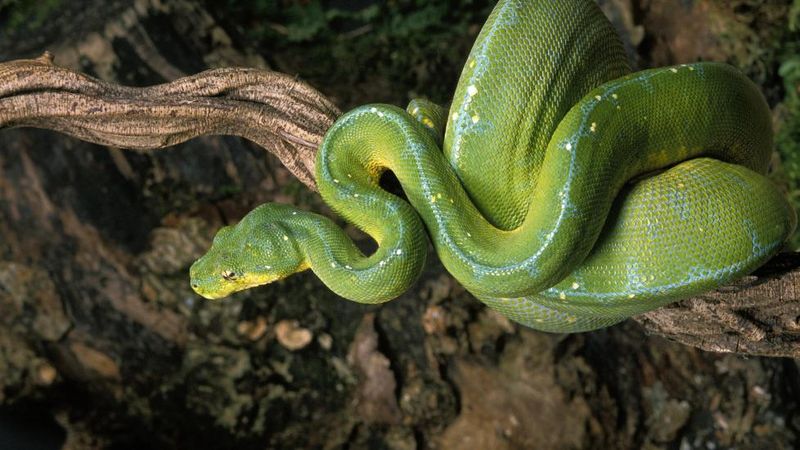
A python’s metabolism operates like a super-efficient engine. After a large meal, they can slow their digestive system dramatically, surviving up to a year without eating again.
This adaptation means control efforts that target their food sources won’t work. Even if prey becomes scarce, pythons simply wait it out, sometimes reducing their metabolism by up to 70% while maintaining their hunting ability when an opportunity finally appears.
10. Global Invasion Potential
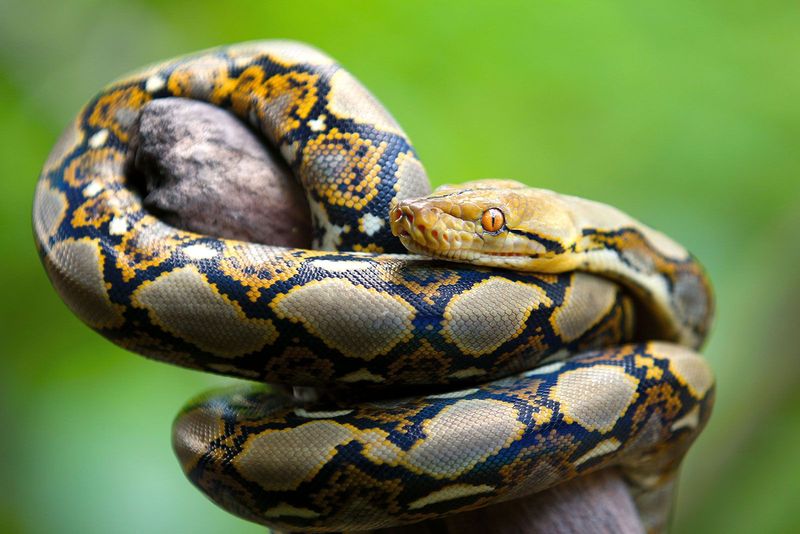
Florida’s python problem isn’t isolated. Ball pythons have established breeding populations in the Canary Islands. Reticulated pythons threaten native wildlife in Puerto Rico.
The exotic pet trade continues shipping pythons worldwide. With climate change creating warmer habitats globally, more regions become potential python territory. Australia maintains strict biosecurity specifically to prevent snake invasions that could devastate their unique wildlife.
11. Ecosystem Engineer Impact
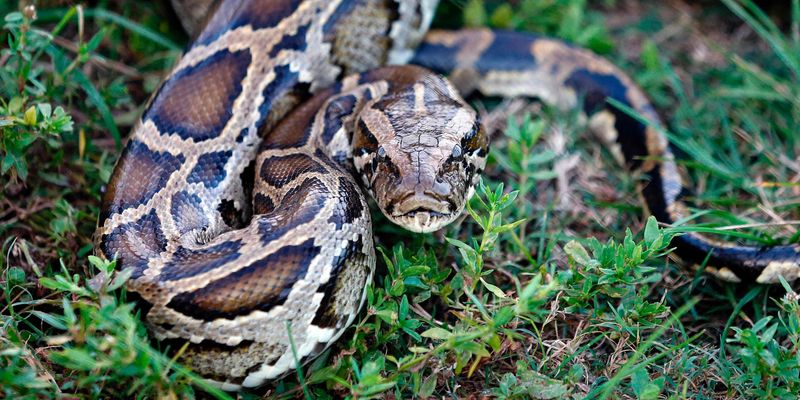
Pythons don’t just eat animals – they reshape entire ecosystems. By removing mid-sized mammals, they change everything from vegetation patterns to insect populations.
When raccoons and possums vanish, the insects they once controlled explode in population. Plant species that depended on mammals for seed dispersal struggle to reproduce. The python essentially rewires complex ecological relationships that evolved over thousands of years, creating ripple effects scientists are still discovering.
12. Limited Natural Predators
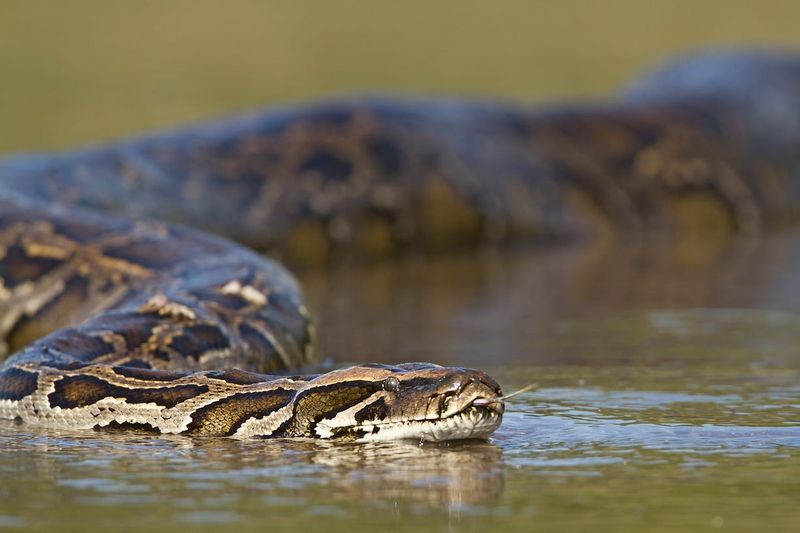
Adult pythons face almost no threats in their invaded territories. Only alligators and humans regularly kill adult pythons, meaning population control rarely happens naturally.
Young pythons face more dangers from birds and mammals, but once they reach about seven feet long, they’ve essentially outgrown their predator risk. With lifespans exceeding 20 years in the wild, a single breeding female can contribute hundreds of offspring over her lifetime.
13. Disease Transmission Risk
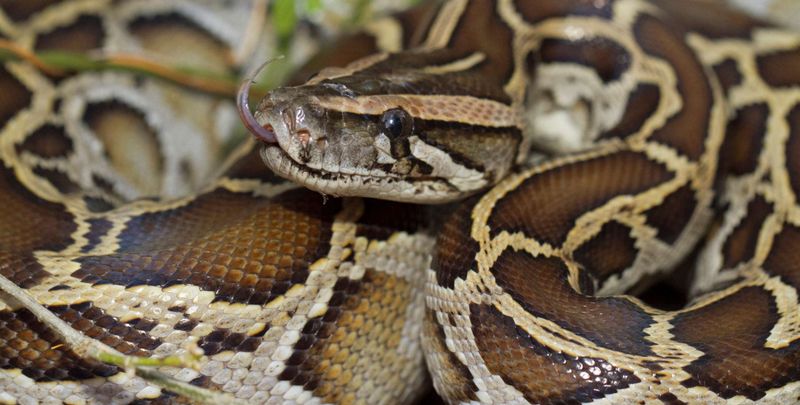
Invasive pythons carry parasites and pathogens from their native range. These include ticks, mites, and internal parasites that can potentially jump to native wildlife species with devastating effects.
Researchers have identified novel retroviruses in captured pythons that could potentially spread to native reptiles. The introduction of exotic diseases adds yet another layer of ecological disruption beyond the direct predatory impact of these invasive snakes.
14. Human Safety Concerns
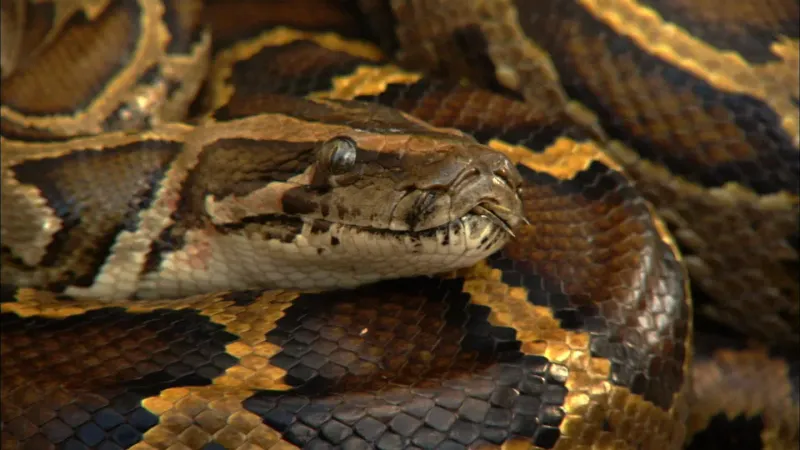
While rare, python attacks on humans do occur. In their native range, reticulated pythons have occasionally killed and consumed people, typically children or smaller adults.
As invasive populations grow in suburban areas, encounters become more common. Florida has documented cases of pythons eating pets and entering homes. The psychological impact on communities changes how people interact with natural areas when giant constrictors might be present.
15. Economic Destruction
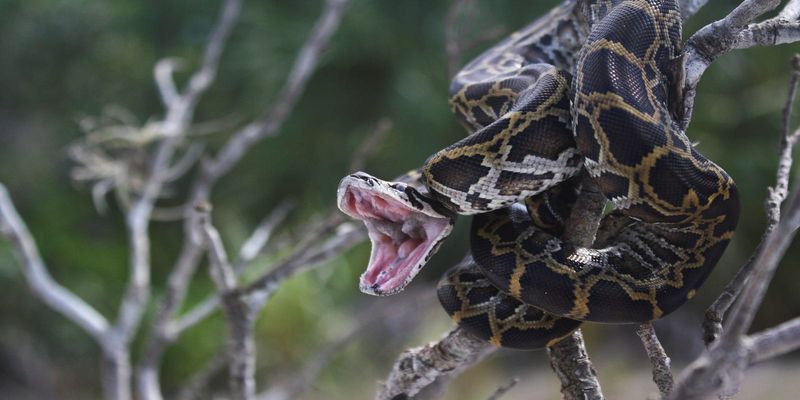
Beyond ecological damage, pythons create significant economic harm. Florida’s Everglades tourism suffers when visitors can’t spot the wildlife that pythons have eliminated.
Agricultural impacts occur when pythons prey on birds that would normally control crop pests. The combined costs of damage and control efforts run into millions annually. One study estimated the overall economic impact of invasive Burmese pythons in Florida exceeds $100 million over a 20-year period.

